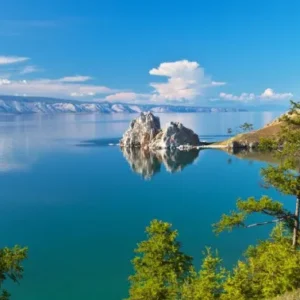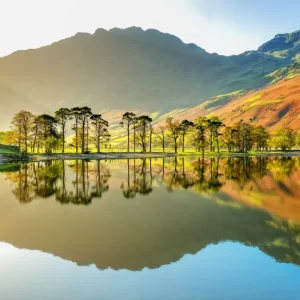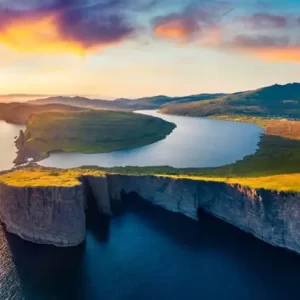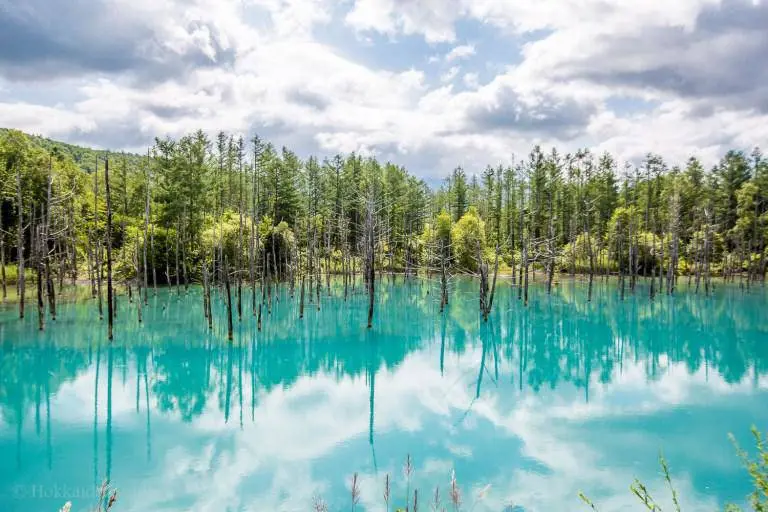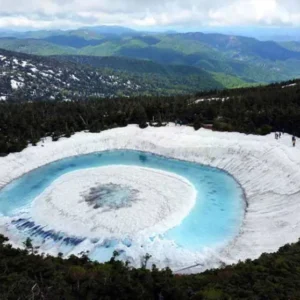Many remain curious about the mysterious pink hue of Lake Hillier, located on Middle Island in the Recherche Archipelago, Western Australia. Despite years of study, there is still no definitive scientific explanation for this phenomenon.
The Enigmatic Pink Color of Lake Hillier
Lake Hillier, also known as the “Pink Salt Lake,” is highly saline and renowned for its bubblegum-pink hue. With an average depth of 600 meters, the lake is surrounded by narrow sandbanks, dense Paperbark forests, and eucalyptus trees. A thin strip of sand separates it from the Southern Ocean, creating a stunning and unique landscape.
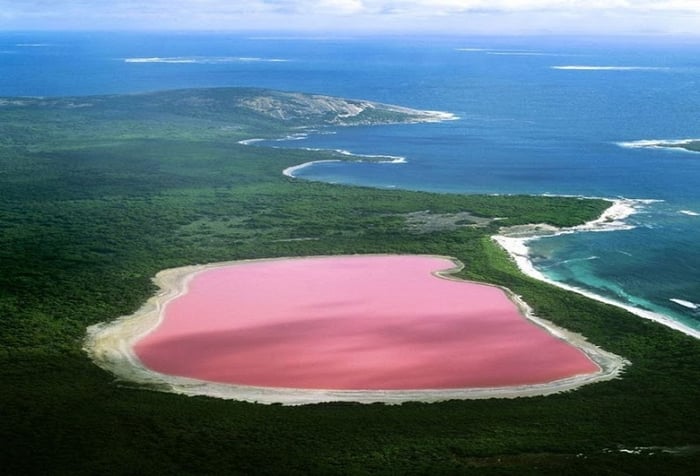
>> Lake Kaindy: The enigmatic sunken forest of Kazakhstan
In the 1950s, researchers examined the lake’s distinct color and hoped to find Dunaliella salina, a type of algae known to produce pink pigments in salty water. Surprisingly, the water samples collected from Lake Hillier showed no traces of this algae.
Another hypothesis suggests that the pink color may be due to red-colored bacteria present in the salt crust. Interestingly, the color is not dependent on sunlight; water samples retain their pink hue even when removed from the lake.
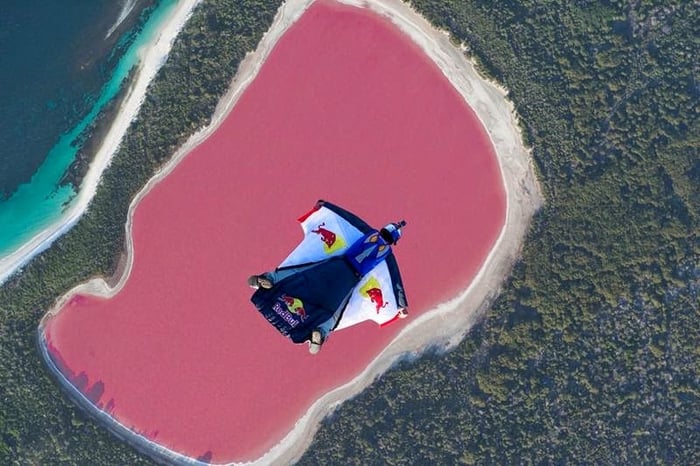
>> Winter masterpiece from frozen bubbles at Abraham Lake
History and Conservation
During the 20th century, the lake was briefly exploited for salt extraction. However, after operations ceased, the island and lake remained largely untouched. Lake Hillier is now considered a natural wonder and a top tourist destination.
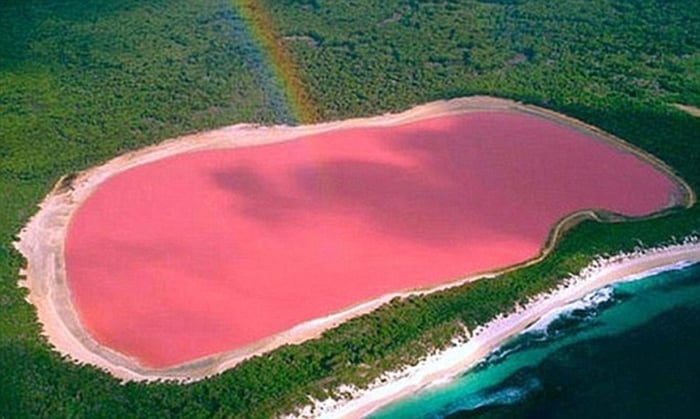
Other Famous Pink Lakes Around the World
Lake Hillier is not the only pink-hued lake globally. Others include:
- Lake Retba (Lac Rose) in Senegal, located northeast of Dakar.
- Salinas de Torrevieja and La Mata in southeastern Spain.
- Dusty Rose Lake in British Columbia, Canada, which shows pink water without salt or algae.
- Masazirgol Lake near Baku, Azerbaijan, a prominent saltwater lake.
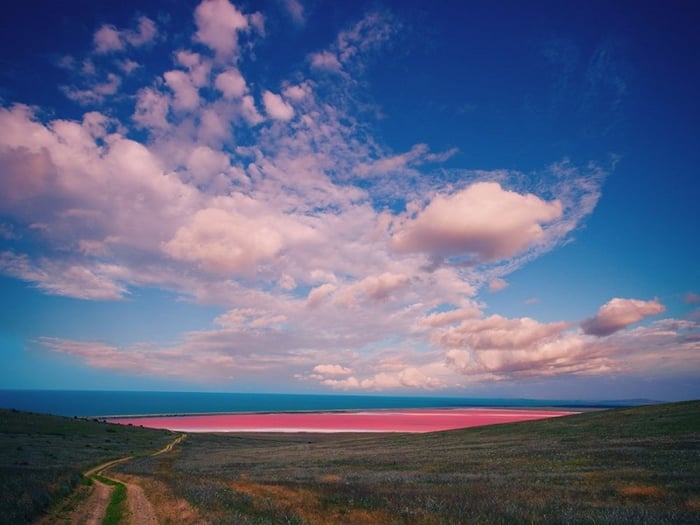
>> Ultimate guide to the Great Barrier Reef: Everything you need to know
Float Without Sinking
The lake’s high salinity mirrors that of the Dead Sea. This density makes the water buoyant, meaning that even if someone falls in, they naturally float to the surface without the risk of sinking.
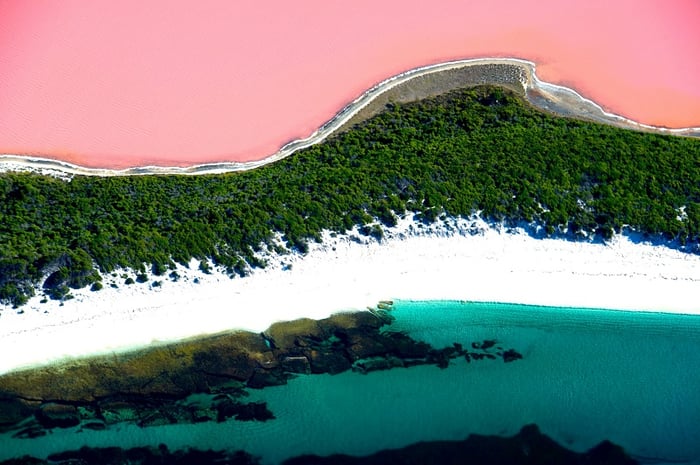
Limited Accessibility
Visiting Lake Hillier requires traveling by helicopter or boat. Unfortunately, many tourists miss out on this spectacular site due to fears of flying or limited access to boats.
With its striking beauty and mysteries yet to be fully uncovered, Lake Hillier remains one of Earth’s most fascinating natural wonders.
>> Devils Marbles: A stunning natural and spiritual wonder of Australia
Frequently asked questions about the Lake Hillier
1. What is Lake Hillier?
Lake Hillier is a small, vibrant pink-colored lake located on Middle Island, the largest of the Recherche Archipelago in Western Australia. Its bubblegum-pink color is permanent and incredibly striking, especially when viewed from the air.
2. Why is Lake Hillier pink?
Lake Hillier’s pink color is caused by a combination of microorganisms, including the algae Dunaliella salina and salt-loving bacteria like Halobacterium salinarum. These organisms produce carotenoid pigments, such as beta-carotene, which give the water its distinctive pink hue. This phenomenon is enhanced by the lake’s high salinity, which makes it a unique environment for these microorganisms to thrive
Fun Fact: Even when you scoop Lake Hillier’s water into a container, it stays pink!
Is Lake Hillier always pink? Yes, unlike some other pink lakes that change color with weather or season, Lake Hillier remains pink year-round, regardless of temperature or sunlight. That’s part of what makes it so unique!
3. Is Lake Hillier dangerous?
Lake Hillier is not considered dangerous to humans. The water’s salinity and microbial content do not harm the skin or pose health risks. However, access to the lake is restricted, primarily to preserve its pristine condition and unique ecosystem.
4. Can you take photos or videos of Lake Hillier?
Absolutely! If you take a flight over the island, aerial photos of Lake Hillier are stunning — especially the contrast between the pink lake, green forest, and blue ocean. It’s a photographer’s dream.
5. How deep is Lake Hillier?
Lake Hillier has an average depth of around 2 meters (6.5 feet), though it varies slightly depending on the area and season.
6. How was Lake Hillier formed?
Lake Hillier’s formation is believed to have resulted from the isolation of seawater in a low-lying area, which then became hypersaline due to evaporation. Over time, the high salinity created conditions suitable for microorganisms that contribute to its pink color. This process mirrors the natural formation of other saline lakes worldwide.
7. Lake Hillier camping
Camping is not allowed on Middle Island, where Lake Hillier is located, as the area is highly protected for conservation purposes. Visitors can view the lake via helicopter tours or boat excursions, but human activities on the island itself are limited to ensure the preservation of its unique ecosystem.
8. Can you swim in Lake Hillier?
Technically, yes — the water is non-toxic and safe to swim in. However, swimming is not generally allowed, as the island is protected and access is restricted for conservation purposes. Most visitors enjoy the lake via scenic flights.
9. Where is Lake Hillier located?
Lake Hillier lies on Middle Island, part of the Recherche Archipelago, off the southern coast of Western Australia, near the town of Esperance. It’s about 720 kilometers (450 miles) southeast of Perth.
10. How big is Lake Hillier?
Lake Hillier is relatively small — about 600 meters long and 250 meters wide. It’s bordered by a rim of white salt, a narrow strip of sand, and dense eucalyptus forest, with the vivid blue Southern Ocean just beyond.
11. Can you visit Lake Hillier in person?
Yes, but access is limited. You can:
- Take a scenic flight from Esperance for stunning aerial views (most popular option)
- Book a boat tour or cruise that passes by Middle Island (but you can’t go ashore without special permission)
- Join an expedition tour with special landing rights (rare and seasonal)
12. What’s the difference between Lake Hillier and other pink lakes?
Lake Hillier is permanently pink, even when removed from the lake. Many other pink lakes, such as Lake Retba in Senegal or Hutt Lagoon in WA, change color depending on salt levels, temperature, and light. Lake Hillier’s consistency makes it especially rare.
13. Is Lake Hillier protected?
Yes. It is part of the Recherche Archipelago Nature Reserve, managed by Western Australia’s Department of Biodiversity, Conservation and Attractions. Middle Island is largely untouched by human development.
14. What else can you do near Lake Hillier?
While you can’t stay on Middle Island, you can:
- Explore Esperance, a coastal town known for white-sand beaches
- Visit Cape Le Grand National Park, home to kangaroos lounging on the beach
- Take boat tours to explore the Recherche Archipelago
- Enjoy hiking, birdwatching, and whale watching (in season)
15. Lake Hillier fish
There are no fish in Lake Hillier due to its extreme salinity, which makes it uninhabitable for most aquatic species. Instead, the lake is home to microorganisms like Dunaliella salina and halophilic archaea.

